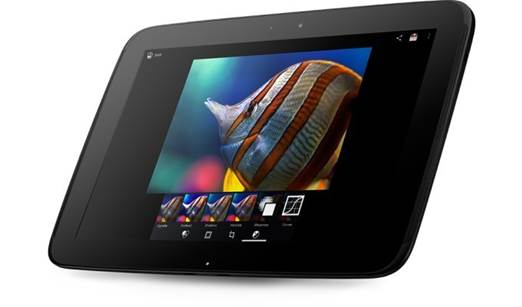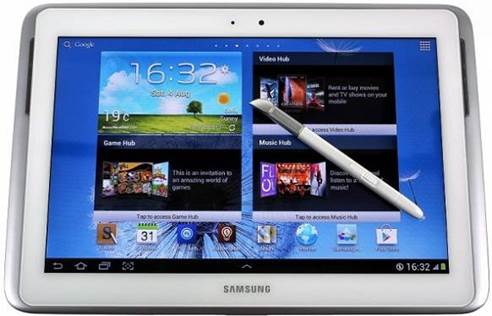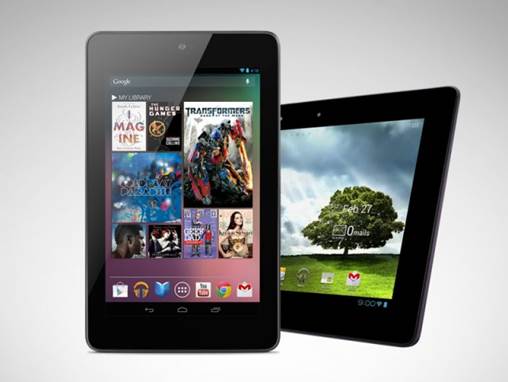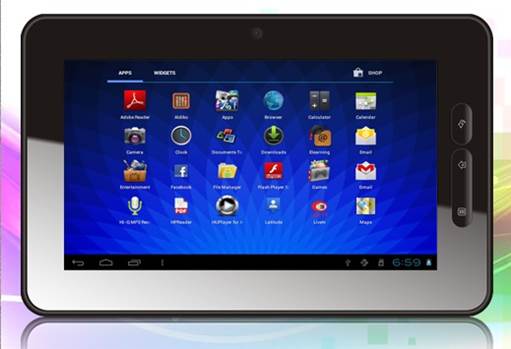Top tablets for the Indian market
Unlike smartphones, tablets tend to have
fewer form factors, practically limited to either 25.4 cm (10”) or 17.78 cm
(7”). These cater to different audiences and changing work conditions whether
you are on the go or relaxing on the couch. Tablets have become more of a style
statement and a gateway to efficient Web browsing and eBook reading.
Premium – Galaxy Nexus 10: Smashing the retina display by a huge margin (~300 PPI), Google,
along with Samsung, has created a hardware marvel. Boasting of a quad-core SoC
with the spanking new Cortex A-15 core at its heart, the Galaxy 10 is not only
a powerhouse but also efficient. The bundled 2 GB of RAM ensures smooth-running
games and applications. Multi-tasking and heavy process execution is buttery
smooth thanks to the beefy hardware. The icing on the cake is the 25.4 cm (10”)
screen with a mind-boggling resolution of 2560x1600, resulting in an astounding
PPI of 299 – a feat that most desktop monitors fail to achieve.

Galaxy
Nexus 10
For optics, the tablet comes loaded with a
full HD (1080p) rear camera and a front (720p) camera for video conferencing
using Google+ hangouts. Updates are no issues either, it being a Nexus device.
This is a cool device if you plan to spend heavily on a premium tablet. The
only downside is local availability; Google hasn't opened its Play Store for
hardware purchases in India and is not actively looking to ship this device
here. However, it is rumored to be priced at around $570 on debut, for the 16
GB version.
An alternative – Samsung Galaxy Note
N8000: Even though the dimensions are similar to
its higher-end sibling (the Nexus 10), the Galaxy Note falls short on many
counts. The quad-core SoC (Cortex A9 cores) though boasting of a higher clock
speed and more processing power, is architecturally crippled compared to the
Cortex A15 cores in the Nexus 10. Further, the screen has a resolution of only
1280x800, which is nowhere near that of the Nexus 10. The build quality of the
Note has been fairly well-received and provides good ergonomics. The tablet
sports optics similar to the Nexus 10. Samsung is shipping the device with ICS
but off lately has been rolling out Jelly Bean updates for the Note, along with
some premium features that are only limited to Samsung tablets. With a price
tag of roughly $700, the Note is very pricey, but the kind of experience it
offers is worth it.

Samsung
Galaxy Note N8000
Mid-range 17.78 cm (7”) tablets
The Google Nexus 7: Google has undoubtedly dominated the tablet market, even though it
is not manufacturing the device. With Asus, Google debuted the Nexus 7 for an
unbelievable price of $199 for the 16 GB version and ever since, it's received
rave reviews. The small screen and 720p resolution were enough for the Tegra3
chip inside it to drive exceptional performance. The tablet has a plastic build
with no rear camera but a 1.2 MP front camera for conferencing.

The
Google Nexus 7
The tablet was later plagued with poor
screen quality and ghosting, along with colour production issues, which seem to
have been fixed in later revisions. The Nexus 7 is a compelling package that
has set a benchmark among low-priced devices. Competing manufacturers are
finding it hard to release a counterpart. Backed by strong community and Google
updates, it's hard to ignore a device that costs so little. The downside – the
Nexus 7 is sold at a price tag of $370 in the Indian market, a decision that is
controlled by Asus. There's also the storage limitation: the Nexus 7 doesn't
offer any option to expand storage – neither via MicroSD nor USB OTG.
An alternative – Micromax Funbook: In a remarkable turn of events, Micromax has stunned other
manufacturers. This cheap tablet comes with a 1 GHz SoC, along with a 17.78 cm
(7”) display. It's not the specs that make it special but the sheer developer
support this tablet has gained making it very unique. You can try a plethora of
tweaks, mods and custom ROMs for the tablet, and get it working within no time.
Though the Funbook may not be
groundbreaking on paper, it boasts a unique community-driven ecosystem and a
super-affordable price of $120.
Now that we’ve done with the list, I hope
you'll be able to make a shrewd choice the next time you're shopping for an
ultra-portable device.

Micromax
Funbook
Are we in a post-PC era?
The advent of smart and ultra-portable
devices is eating away at the legacy PC’s market share and providing a
compelling solution to the end user. However, these devices are not meant for
power usage, irrespective of the price tag and the number of cores. For light
work, these devices fit the bill – but people harping about the ‘post-PC era’
are exaggerating. These devices still require a full-blown PC to work perfectly
(syncs, updates, etc) and don't have the amenities to enable high-end work.
Thus, as of now, we're still very much in the PC era.